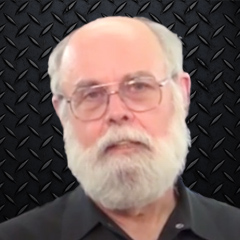
Understanding Cam Specs: Part 1
Bruce TessmerDescription
These videos, as you might guess, concentrate on the V-Twin pushrod motorcycle engine and understanding cam specs. This subject does become complicated. These videos are presented as an in-depth overview.
S&S publishes specifications for their camshafts to help customers with understanding cam specs to choose the right camshaft(s) for their particular application. In order for those specifications to be helpful, it is important to understand exactly what they’re describing.
The camshaft controls the valve train of your engine. It controls the opening and closing of the intake and exhaust valves. As the camshaft turns, the lobe(s) of the cam translates the rotation of the camshaft into a linear reciprocating motion that pushes the tappet up and lets it down again.
A pushrod transmits the up-and-down linear motion of the tappet to the rocker arm. When the pushrod pushes one end of the rocker arm up, the other end of the rocker arm pushes down and pushes the valve stem down, against the force of the valve spring, which opens the valve.
When the cam allows the tappet and pushrod to move back downward, the force of the valve spring pushes the valve back closed. Valve Spring force keeps the tappet in contact with the cam lobe at all times. Valves have to be opened and closed at the right times during the cycle of a four-stroke gas engine. The four-stroke engine cycle consists of intake, compression, power, and exhaust strokes. In order for the engine to run correctly the valves have to be made to open and close precisely at the right times during the cycle. That is the very important job of a camshaft.
Now that we have a basic understanding of cam specs, how a four-stroke engine works and the role of a cam shaft within the valve train of an engine, we can look at different camshaft specifications and talk about how they affect engine performance.
Next, be sure to watch these videos to learn more about cam specifications:
Understanding Cam Specs: Part 2
Understanding Cam Specs: Part 3
Watch more upgrade projects from Fix My Hog here:
Cam Upgrade and Tensioner Upgrade
Cam Upgrade and Gear Driven Cam
M8 Cam Upgrade
Thank you to S&S for providing this video series; make sure to read more about cam specs on their site.
Premium Membership
Unlock exclusive member content from our industry experts.
- 24/7 Access to Premium Instructional Videos, Projects, and Tips
- Step-by-Step Guides and Demonstrations
- 50% Discount on Video Downloads in the Fix My Hog Shop
- Access to Ask the Expert Program
Unlock exclusive member content from our industry experts.
- 24/7 Access to Premium Instructional Videos, Projects, and Tips
- Step-by-Step Guides and Demonstrations
- 2 Full-Length Video Downloads to Watch Offline
- 50% Discount on Video Downloads in the Fix My Hog Shop
- Access to Ask the Expert Program
Gold Membership
$302 Value
Get everything included in Premium plus exclusive Gold Membership benefits.
- 24/7 Access to Premium Instructional Videos, Projects, and Tips
- Step-by-Step Guides and Demonstrations
- 16 Full-Length Video Downloads to Watch Offline
- Discounts on Purchase-to-Own Content in the Fix My Hog Shop
- Access to Ask the Expert Program
- Exclusive GOLD LIVE Streaming Events
- $8 Off Clymer and Haynes Service Manuals
Share tips, start a discussion or ask one of our experts or other students a question.
Already a member? Sign in
No Responses to “Understanding Cam Specs: Part 1”